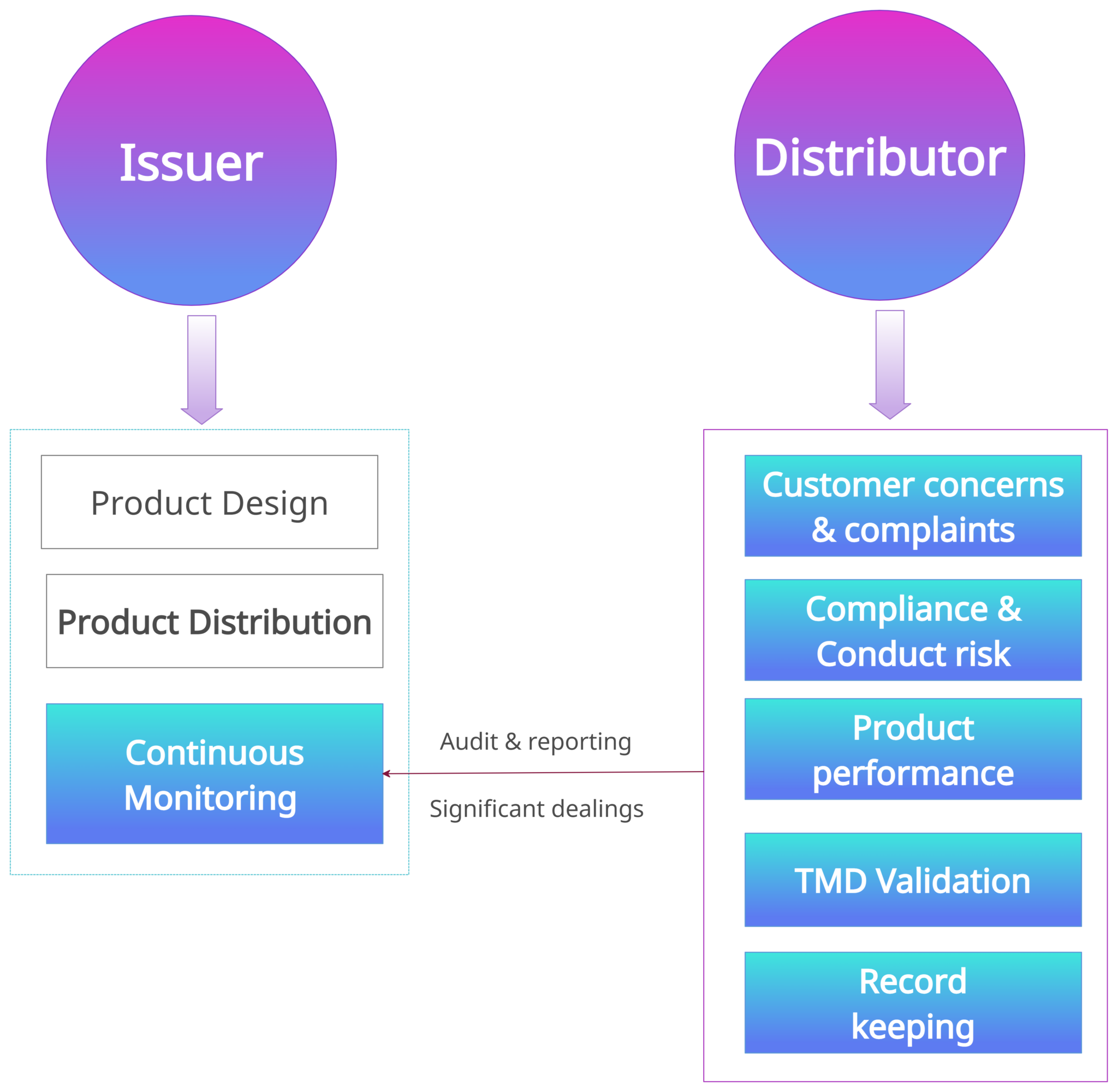Support for distribution partners

To support an effective product governance arrangements product issuers and distributors need to implement and maintain robust and effective product governance arrangements. A distributor must understand the financial products it distributes to customers, assess the compatibility of the financial products with the customers’ needs to whom it distributes, consider the issuer’s identified target market, and ensure the best interests of the customer.
It is important that the product distributor becomes aware, for example, through the analysis of customer’s complaints or other sources and data, that the sale of a certain product outside the target market identified ex-ante has become a significant phenomenon (for instance, in terms of the number of the customer involved), such input will be taken into due consideration in the course of its periodic review of the products and related services offered. In such cases, the distributor may, for example, come to the conclusion that the target market identified initially was not correct and that it needs to be reviewed or that the related distribution strategy was not appropriate for the product and has to be reconsidered.

Establishing consistent, efficient, and effective supervisory practices and guidelines on the target market assessment is essential, especially given that the implementation of the target market assessment is complex and will benefit from further clarity. The guidelines mainly address the target market assessment but do not necessarily ensure a standard, uniform, and consistent implementation approach.
To enable a level-playing field, product issuers can go beyond just providing product governance guidelines to distributors.
An issuer can enable and support the product distributor in some of the below ways to establish a coherent and practical approach in the supervision
- Policies and obligations to meet RG 274 obligations and product governance requirements
- Qualitative & quantitative criteria for the potential target market identification
- Development of review triggers
- Quality assurance of workforce to ensure they understand the role they play in the appropriateness assessment process and the skills, knowledge and expertise necessary,
including sufficient knowledge of the relevant regulatory requirements and procedures, to discharge their responsibilities. - Audit framework for continuous control monitoring: once the target market is identified, guidelines in establishing continuous monitoring framework for process automation to support product governance requirements: Services for the mass market in particular, may require automation of processes, and this automation is usually based on formulas or algorithmic methodologies that process quantitative criteria for products and customers
- Supporting systems with product governance & compliance as a service arrangements, where the distributor cannot fulfil the obligation efficiently and accurately because of the lack of skills and technology infrastructure
- Record keeping & archiving guidelines
